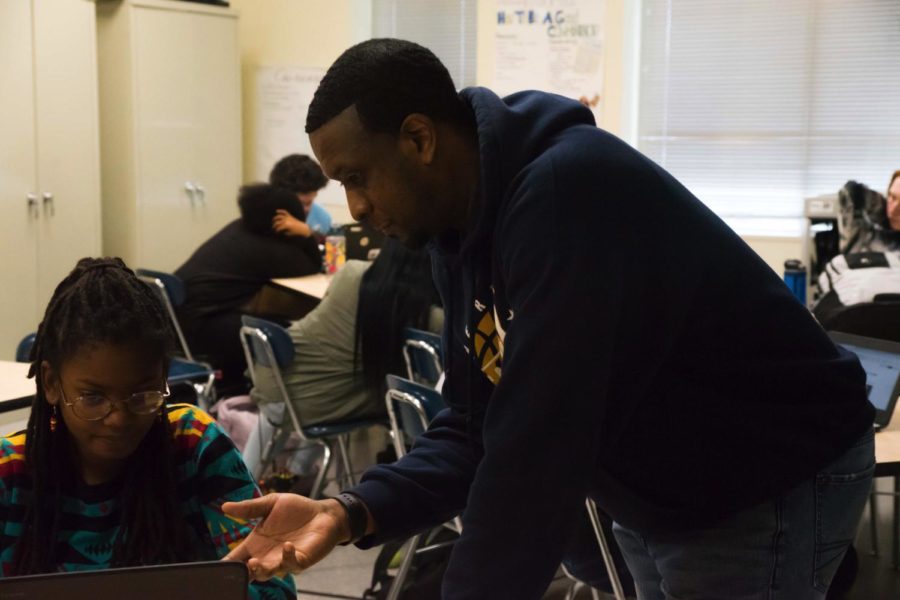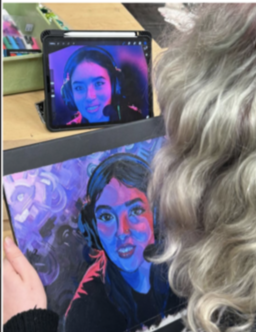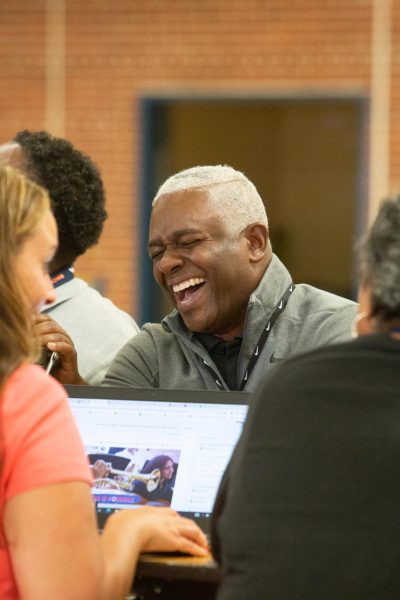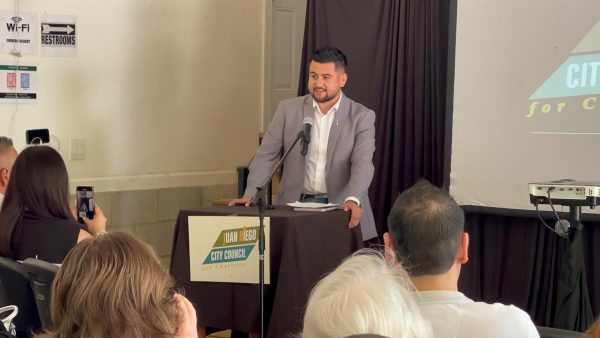Diversity in staff does not reflect student body
Photo by Eli Hausman
Vince Moore works with and instructs one of his students in class.
When a student walks down the 600 hallway, they’ll notice one thing: there’s only one black teacher. This is what a lot of black students face when they come to East Meck, a school that doesn’t reflect who they are.
In America, teaching has long been synonymous with white females. Even though America is diversifying its teachers, you’ll find that often, the racial demographics of teachers don’t represent that of the student body. This is true at East, where there are only 10 black male teachers.
If you walk around campus, you are likely to hear the names: Daniel Henry and Vince Moore.
Moore pursued teaching because of his love of coaching.
“The basketball court is an extension of the classroom, they both require a lesson plan, objectives, a philosophy [and] goals,” Moore said.
He wanted to pursue his love for both the sport of basketball and teaching, which is currently being fulfilled at East Meck.
“It’s important to understand how the world became the way it is,” Henry said.
Henry’s answer to what led him to teaching comes from a different place than Moore’s. Henry’s comes from his love for his subject world history.
While Moore and Henry began teaching for different reasons, they both have similar perspectives on how race plays a role in their jobs. Both are aware of the experiences that black adolescents face.
“There’s certain stereotypes that automatically apply to you,” Henry said.
As older black males, they understand that people often treat them differently because of their race, so it’s up to them to persevere past stereotypes.
“I believe that I have a [great] influence on young men, regardless of their socioeconomic status, their home situation, whether they have a dad or not,” Moore said. “I really do feel like a lot of what I’m able to provide to them, them the greatest benefit to achieve a higher standard of living.”
Describing how Moore’s role as a teacher allows him to influence students to a point where they start to want more for themselves out of their lives.
Henry recognizes how rare a black male teacher is, so when another black student has their class, they connect. Henry saying this goes back to him knowing that this world isn’t going to be nice, making it a responsibility to prepare them for a world that doesn’t look out for them.
“I’ve heard students say that they are more inclined to learn, or they’re more connected with their black teachers, they feel like, sometimes the white teachers, they don’t relate, they don’t understand,” Moore said.
Moore believes that as the community of the school grows, the staff should reflect what the school is becoming.
“We need more black [and] Hispanic faces, because these are [the] students that we’re [working] with [daily],” Moore said.
Henry believes that diversity in the school can’t happen until more people of color apply, he also thinks that young minorities are deterred from applying because teachers aren’t paid well.
Overall, these two teachers have allowed themselves to not just be role models for students, but to be resources for adolescents to use as ways to grow past the boundaries set for them.
Your donation will support the student journalists of East Mecklenburg High School. Your contribution will allow us to purchase equipment and cover our annual website hosting costs.













